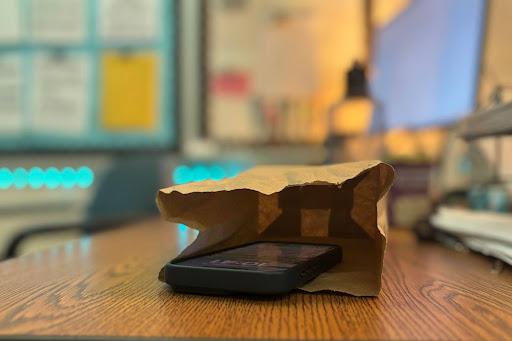With their iconic black and white fur, round faces and snub noses, pandas have been one of the popular attractions at the Smithsonian National Zoo in Washington D.C. The Washington Post says that the pandas have become “ubiquitous and iconic symbols of the city” as their pictures have been featured on buses, t-shirts, mugs and even metrocards.
On the morning of Nov. 8, three pandas — Tian Tian, Mei Xiang and Xiao Qui Ji — were transported out of the zoo and loaded onto a FedEx aircraft going to China. Now, after more than 50 years, the National Zoo will not be housed by Chinese pandas anymore as the lease agreement between the U.S. and China comes to an end.
Many RM students expressed their disappointment about the departure of the pandas. “I was going to go see [the pandas] last week but I had other plans so I was hoping to go another time,” freshman Holly Chen said.
Wildlife Biology teacher Renee Harmon does not have an opinion on the animals leaving American zoos, but believes that conservation is the most important consideration in making these decisions.
“If having pandas in more zoos helps with conservation, then I think that’s where they should be,” Mrs. Harmon said. “If conservation efforts could continue even without the pandas in the zoos, then I think it’s totally fine to pull them from the zoos.”
The initial agreement to house the pandas in the National Zoo was made following President Richard Nixon’s historic visit to China in 1972. U.S. zoos made an agreement with China WildLife and Conservation Association as an effort to help the conservation of the species.
According to the National Zoo Website, in 2000, the two pandas, Tian Tian and Mei Xiang, were brought to the National Zoo for a research and breeding program as part of the agreement. The staff studied the giant pandas’ behavior, biology, breeding, reproduction and diseases.
Due to the expiration of this loan deal between the two countries, pandas across the country are currently in the process of departing zoos. During the past four years, pandas in San Francisco and Memphis have returned back to China.
This departure also coincides with escalated interactions between Washington and Beijing regarding discussions on security, economic matters and humanitarian issues.
This event approaches the U.S. near the end of China’s “panda diplomacy” with the country, as it leaves Atlanta as the sole and only remaining Chinese panda shelter in the country. Projections indicate that all pandas in the U.S. will be returning to China by 2024.
This development has also sparked curiosity among many individuals regarding the potential impact of the pandas’ departure on the ongoing relationship between the two nations.
It is widely argued that China benefits greatly from “panda diplomacy.” According to the Washington Post, China’s pandas have served as “a diplomatic tool methodically deployed to shore up alliances, woo new partners and build goodwill.”
However, Government and Human Geography teacher Andrea Lyons thinks that there will not be any direct consequences of the exchange.
“I think that having the pandas and having people encounter and see them, hopefully [people] will think of China’s generosity and letting us borrow them and see it in a positive light,” Mrs. Lyons said.







